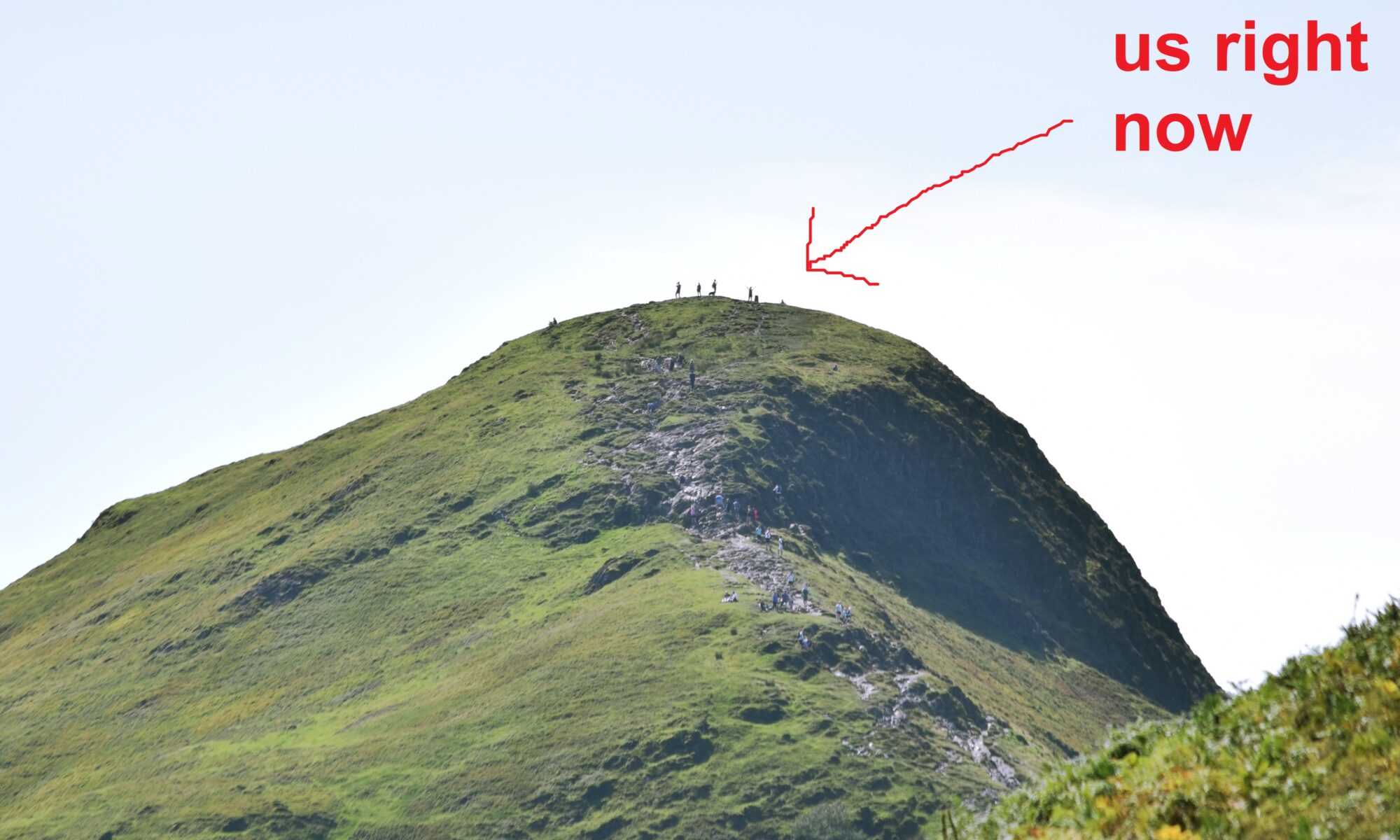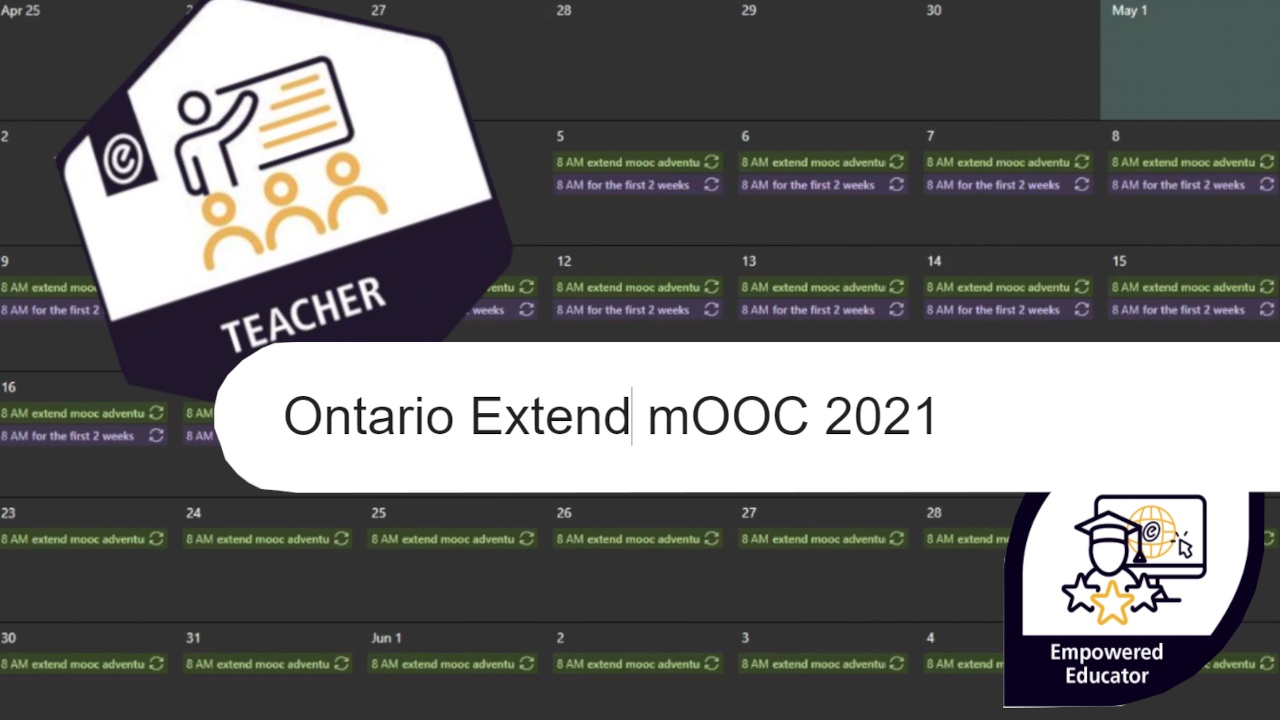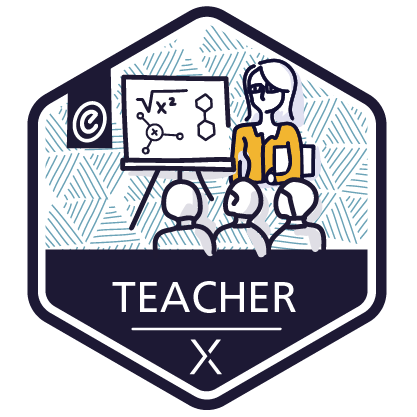Looks like we made it.
Shania Twain. Or Barry Manilow.
Huzzah! The Trent Online Extend mOOC Crew has completed training and preparations for their hosting of the 2021 Ontario Extend mOOC. Just in time, too because it starts next week. Let’s check in with the crew for final updates on the various learny journeys.
A reminder of the different paths we are on:
- Maureen reporting in from the Collaborator Module
- Christian reporting in from the Curator Module
- Stephanie reporting in from the Experimenter Module
- Katrina reporting in from the Scholar Module
- Terry reporting in from the Technologist Module
Maureen
My final activity for the Collaborator Module involved mapping my Personal Learning Network (PLN) which I decided to undertake somewhat literally (see the TweepsMap in my post) as well as figuratively. To see some of the key nodes in my PLN (spoiler alert – some of the names may sound familiar), take a look at my Response to Activity #4.
Christian
The Curator Module culminates in contributing to the amusingly titled Curation as Creation | Creation as Curation Padlet. The final activities ask you to put some skin in the game (something I’ve gotten quite used to with our learny journey) and consider the quality of your curated resources. As luck would have it, my efforts have earned me the badge for this module! I’ve detailed this leg of the adventure within my super secret, publicly available mOOC journal.
Stephanie
I’ve considered myself an experimenter for a long time, but now it’s official – I’ve earned my Experimenter badge!!! For my third experimenter activity, I chose to use H5P to present some of our university policies and resources in a more creative and attractive way for students. The result is something I’m able to use in current and future course developments. To finish the module and receive the Experimenter badge, I also had to create a video reflecting on my work in the module. Creating my video ended up being the most challenging part of the module for me because there was so much I wanted to do with it. I finally had to accept that “Perfection is the enemy of progress” to submit it. In the end, I definitely stumbled over some word choices, my GIF wouldn’t loop, and the audio quality/volume isn’t consistent, but it was fun to make and a great learning experience (my biggest takeaway was that I should probably leave the movie-making to Christian in the future 😉 )!
Katrina
After my marking was all finished and uploaded, I turned my attention to the last few activities of the Scholar module, and found myself thinking and detailing my plans around how I would refine and adapt my research around the trans-Atlantic slave trade for use in the classroom. This isn’t as easy as it seems, particularly when you’re approaching these kinds of lessons consciously rather than intuitively. While some students may be largely uninformed about the horrors of the trans-Atlantic trade, other students, particularly those of African descent, are sharply aware and as an educator, the last thing anyone wants is to retraumatize their students! Building an explicit methodology around what I instinctively do was a real eye-opener, and I was very proud when I was awarded my Scholar’s Badge for my work!
Terry
I finished up the Technologist Module by designing and developing a trailing-edge technological solution in the form of a series of folders for my students to use on their offline travels. The timing could have been better however, as by the time I had it ready there were only a handful of students left who still needed to travel to Canada. My students gave me a thumbs up, nice try, thanks anyway response so that was nice! Regardless, the practice of working through the module to identify a design gap and activities like creating an empathy map is endlessly useful. I plan to run through this practice again and again. Maybe I’ll get a new copy of the badge every time! Here’s a link to my workspace again, if you want to dig in.
So What’s Next?
We begin the real deal! On next Wednesday, May 5th we will be sending out log in instructions for the community space and hosting an optional launch party. From our experience, optional parties are the best parties. If you’ve signed up for the mOOC, you will receive that email Wednesday morning. If you haven’t signed up yet, but you still want to, what you need to do is sign up! Pop your name in here: http://bit.ly/TrentmOOC and we will follow up!










